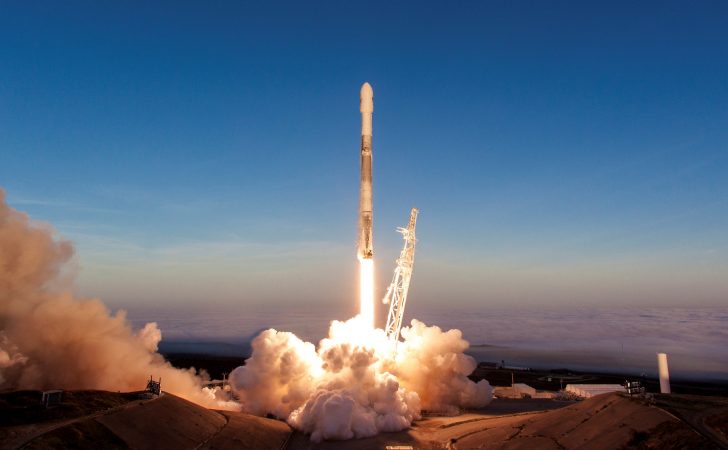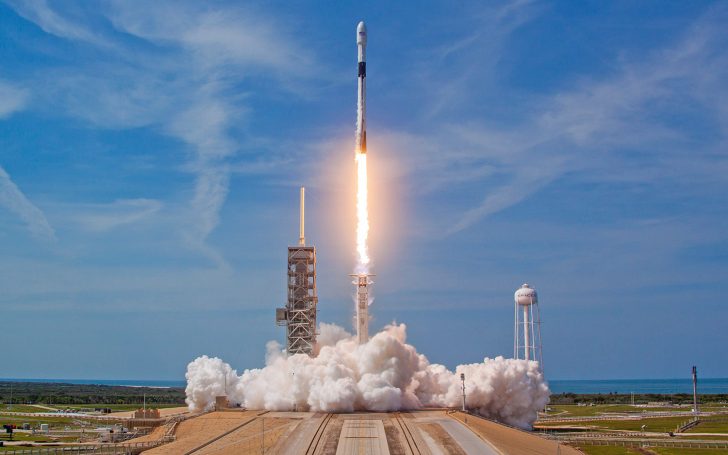SpaceX successfully executed another Falcon 9 launch, a critical mission that delivered 22 Starlink satellites to low Earth orbit. This event, which took place at the Cape Canaveral Space Force Station, marks yet another milestone for SpaceX in its ambitious plan to expand global internet coverage through its Starlink constellation.
The Falcon 9 launch was a momentous occasion for SpaceX, especially following recent challenges. At 9:20 a.m. EDT (1320 UTC), the Falcon 9 rocket roared to life, lifting off from Space Launch Complex 40 (SLC-40). The four-hour launch window had been opened, and as the clock ticked down, anticipation grew. When the countdown reached zero, the rocket ignited, carrying its precious cargo into space.

Space News / This mission, designated as Starlink 10-5, is significant for several reasons. It represents the 57th launch of Starlink satellites in 2024.
The latest rocket launch showcases SpaceX’s relentless drive to populate low Earth orbit with these internet-beaming satellites. The 22 new satellites deployed on this mission will join thousands of others already in orbit, enhancing global internet coverage. For those closely watching the Falcon 9 launch, it was a testament to SpaceX's ability to overcome obstacles and achieve its objectives.
New Falcon 9 Booster Debuts on a Critical Mission
The Falcon 9 launch featured a new booster, B1085, marking its debut within the SpaceX fleet. This was not just any routine mission for the company. It was the first outing for this particular booster. As with any first flight, there was a degree of uncertainty, but SpaceX's engineers were confident in the booster’s capability.
After a little more than eight minutes of flight, the booster successfully touched down on the droneship named ‘A Shortfall of Gravitas’ (ASOG). This landing was not just another number in SpaceX’s growing list of achievements. It was the 80th landing on ASOG and marked the 341st booster landing in SpaceX’s history. The successful landing of the Falcon 9 booster is a crucial part of SpaceX’s strategy to reduce the cost of space travel by reusing rockets.
2024 Falcon 9 Launch Overcomes A ‘Water Intrusion’
The Falcon 9 launch almost did not happen on schedule due to a water intrusion issue that could have been catastrophic. The problem surfaced when the booster, which had been transported by road from Texas to Florida, encountered moisture intrusion.
This incident, reported by Steve Stich, NASA’s manager of the Commercial Crew Program, highlighted the challenges SpaceX faces in maintaining its rigorous launch schedule.

Elle / To ensure the booster’s readiness for the Falcon 9 launch, SpaceX conducted a static fire test on Monday night.
This test, crucial in verifying the health of the rocket, involved firing the booster’s engines while it remained stationary. The test’s success allowed SpaceX to proceed with the launch, but it also underscored the meticulous care and attention to detail required in preparing rockets for space travel.
A Record-Breaking Year for SpaceX and Starlink
The Falcon 9 launch that sent the Starlink satellites into orbit was more than just a routine mission. It was the 59th launch from Florida this year, contributing to a record-breaking 153 global, orbital launches in 2024. These numbers are staggering and reflect the pace at which SpaceX is expanding its operations.
The mission also signifies the 57th Starlink launch of the year, demonstrating SpaceX’s commitment to its vision of global internet coverage. Each Falcon 9 launch that delivers Starlink satellites to orbit brings the company closer to its goal of providing high-speed internet access to underserved areas around the world. The pace of these launches is accelerating, with no signs of slowing down.








